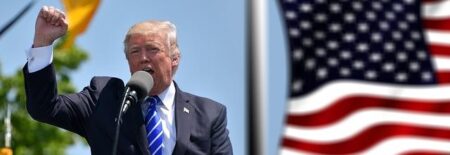In a significant move impacting the luxury watch market, the United States has announced a new 15% tariff on Swiss timepieces. This development, reported today by WatchPro USA, comes amid ongoing trade tensions and is expected to reshape the dynamics between American consumers and Swiss watchmakers. Industry insiders and collectors alike are now assessing the potential consequences of the tariff, which targets one of the most prestigious sectors in the global luxury goods market.
BREAKING NEWS USA Implements 15 Percent Tariff on Swiss Watches Impact on Importers and Retailers
The recent imposition of a 15% tariff on Swiss watches by the United States has sent ripples through the luxury timepiece market. Importers now face increased costs, which industry insiders predict could result in a notable price hike for consumers. Retailers, especially those heavily reliant on Swiss brands, are bracing for impacts on their profit margins and sales volumes as demand sensitivity to pricing is expected to intensify. Many importers are exploring strategies to mitigate the tariff’s effects, including negotiating with suppliers or diversifying their watch portfolios.
Industry experts highlight several immediate challenges:
- Rising final retail prices, potentially dampening consumer enthusiasm.
- Shift in consumer preference towards alternative brands or domestic products.
- Inventory management complexities as retailers reassess stock levels.
- Logistical adjustments to navigate customs and compliance.
The tariff could reshape market dynamics, encouraging both importers and retailers to innovate their supply chains and marketing approaches to maintain competitive positioning in a fast-evolving luxury watch landscape.
| Stakeholder | Primary Concern | Potential Response |
|---|---|---|
| Importers | Increased import costs | Supplier negotiation |
| Retailers | Reduced profit margins | Price adjustments or promotions |
| Consumers | Higher retail prices | Shift to alternative brands |
Sector Analysis Swiss Watch Industry Faces New Challenges Amid US Tariff Introduction
The recent implementation of a 15% tariff on Swiss watches by the United States government marks a significant turning point for the renowned Swiss watch industry. Thus far, the industry has enjoyed a favorable trade environment with one of its largest consumer markets, but the new tariff threatens to disrupt this dynamic. Manufacturers and retailers alike are bracing for increased production costs, which could lead to higher retail prices and potentially reduced demand among American consumers. Swiss watchmakers may need to reassess their pricing strategies and supply chain operations to mitigate the impact of these duties.
Industry experts identify several critical challenges emerging from this development, including:
- Competitive Pressure: Increased tariffs may advantage non-Swiss brands not subject to the same duties, intensifying competition.
- Market Diversification: Swiss companies are likely to accelerate efforts to penetrate alternative global markets to offset declining US sales.
- Innovation and Value Proposition: There is a growing necessity to highlight craftsmanship, heritage, and technological innovation to justify premium pricing amid rising costs.
| Sector Impact | Short-Term Effects | Long-Term Outlook |
|---|---|---|
| Export Volume | Decrease in US shipments | Stabilization via new markets |
| Retail Pricing | Price hikes expected | Potential margin adjustments |
| Brand Positioning | Marketing to emphasize quality | Increased focus on innovation |
Consumer Impact How Higher Prices Could Affect American Watch Buyers
American watch enthusiasts are bracing for the ripple effects of the newly imposed 15% tariff on Swiss watches. As prices climb, buyers may find their luxury timepieces shifting from coveted status symbols to cautious investments. Many consumers could delay or downgrade their purchases, opting for entry-level models or alternative brands. Retailers anticipate fluctuations in sales trends, with some predicting a temporary slump as the market recalibrates to higher costs.
Key implications for watch buyers include:
- Increased Costs: Swiss watches could see price tags surge by 10-20% after tariffs and markups.
- Shift in Preferences: Potential rise in demand for domestic or Asian-made watches offering better value.
- Delayed Purchases: Collectors might postpone acquisitions, waiting for market adjustments or possible tariff revisions.
| Category | Pre-Tariff Avg. Price | Post-Tariff Estimated Price | Consumer Reaction |
|---|---|---|---|
| Entry-Level Swiss | $1,500 | $1,725 | Moderate sales dip |
| Mid-Tier Luxury | $5,000 | $5,750 | Shift to alternatives |
| High-End Collectibles | $15,000+ | $17,250+ | Purchase postponement |
Strategic Recommendations Navigating the New Trade Landscape for Swiss Watch Brands and Distributors
Swiss watch brands and distributors must swiftly recalibrate their market strategies to remain competitive under the new 15% US tariff framework. Prioritizing cost optimization through streamlined supply chains and increased use of local assembly where feasible can soften impacts on retail pricing. At the same time, brands should enhance their digital engagement and direct-to-consumer sales channels to bypass traditional markups, maintaining customer loyalty amid price sensitivity.
To capitalize on emerging opportunities, stakeholders should consider these strategic moves:
- Diversify export markets to reduce reliance on the US and tap into growing Asian and Middle Eastern luxury consumers.
- Invest in brand storytelling emphasizing Swiss craftsmanship and heritage to reinforce perceived value despite higher tariffs.
- Collaborate with US distributors for joint marketing campaigns and exclusive product lines to justify premium pricing.
| Strategy | Objective | Expected Outcome |
|---|---|---|
| Supply Chain Optimization | Reduce cost pressure | Improved profit margins |
| Market Diversification | Mitigate US market risk | Revenue stabilization |
| Digital Engagement | Enhance customer loyalty | Sustained sales growth |
Insights and Conclusions
As the United States moves forward with the implementation of a 15% tariff on Swiss watches, industry stakeholders and consumers alike are bracing for the economic ripple effects. This decisive measure, aimed at addressing longstanding trade imbalances, highlights the evolving landscape of international trade relations. WatchPro USA will continue to monitor this developing story closely, providing updates on how this tariff impacts the luxury watch market and broader bilateral trade ties in the months ahead.




